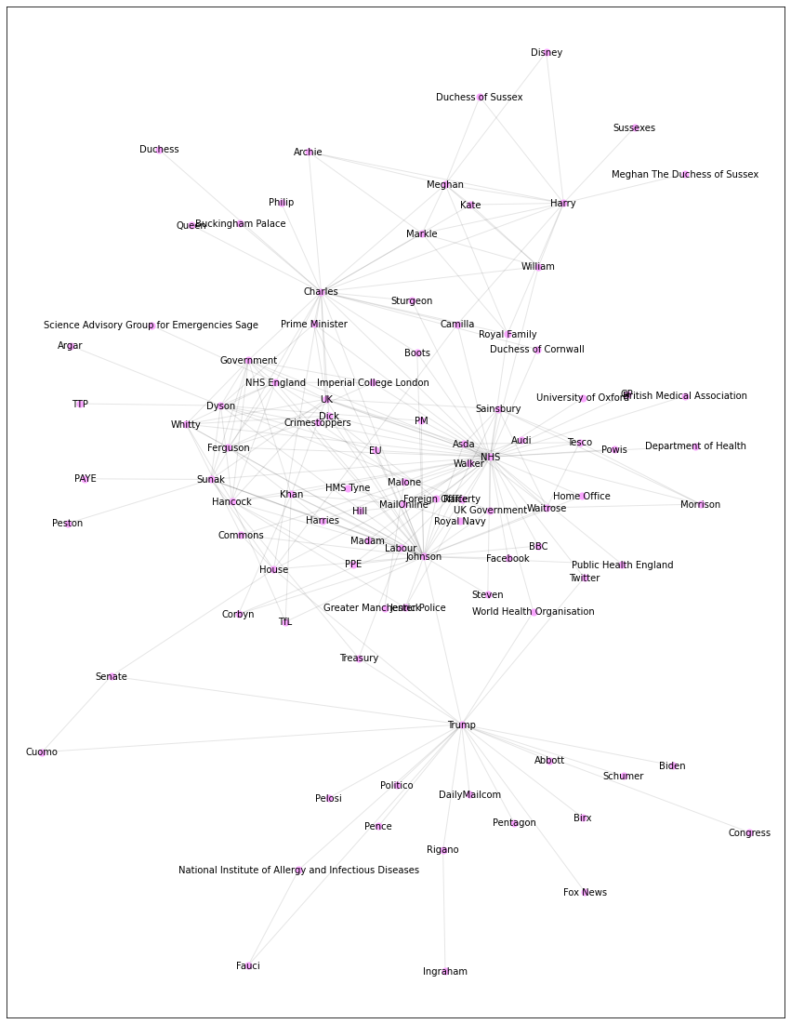Link analysis is a method of organizing the given data, specifically in the form of nodes and edges, and deriving patterns to attain valuable insights. Suna (2019) answers whether the network analysis can predict success in the box office.
The crucial aspect of this analysis revolves around the idea of Degree Centrality, which could be represented mathematically as the following:
Note that we normalize the expression according to the number of nodes in the graph. Graphically, the degree centrality of a given node corresponds to the number of out-links it has as a ratio with the remaining nodes in the network.
To start analyzing the success of the box office of movies, we construct a network like the following:
- From a list of movies with the casting members ordered by release date
- Nodes: Movie Actors
- Edges: Co-starred
Suna (2019) introduces the variable of significance for the stars in a movie by simply extracting the three main characters from them. This leads to a network consisting of the most impactful actors in movies with links to other impactful actors that have co-starred in movies. Furthermore, the degree of centrality for each of the main characters are calculated using the formula mentioned previously.
Extracting a well-known actor from the network will result in a densely connected component that resembles the following image.
From the above component, we see that the degree of centrality of a given actor is directly proportional to the popularity and the significance the actor brings to their movies. Nicolas Cage, for instance, seems to have a high degree of centrality. This brings us to the question of whether this degree of centrality is correlated to the box office success of an arbitrary move. After analyzing the degree of centralities and the revenues of movies using the Spearman Correlation Coefficient, Suna (2019) found that the degree of centrality of a given actor is indeed statistically related to the revenue of the movie they have acted in. Specifically, the more significant the actor was in a movie, their degree of centrality seems to have a higher statistical correlation with the revenue of the movie.
This form of link analysis is similar to that of the Hubs and Authorities algorithm (HITS) that is used as a voting mechanism for web pages. The HITS algorithm iteratively calculates the centrality of a given web page, which serves as a quantitative value for the importance of a web page. Therefore, we have seen that analyzing a movie star network using a form of link analysis could help with predicting whether or not a movie was successful in the box office, which highlights the importance of the centrality of nodes in a network
References
Suna, Ahmet (2019). Can Network Analysis Work for Predicting Success of Box Revenue. Retrieved November 19, 2020, from https://towardsdatascience.com/can-network-analysis-work-for-predicting-success-of-box-office-revenue-c8370c8427f9


